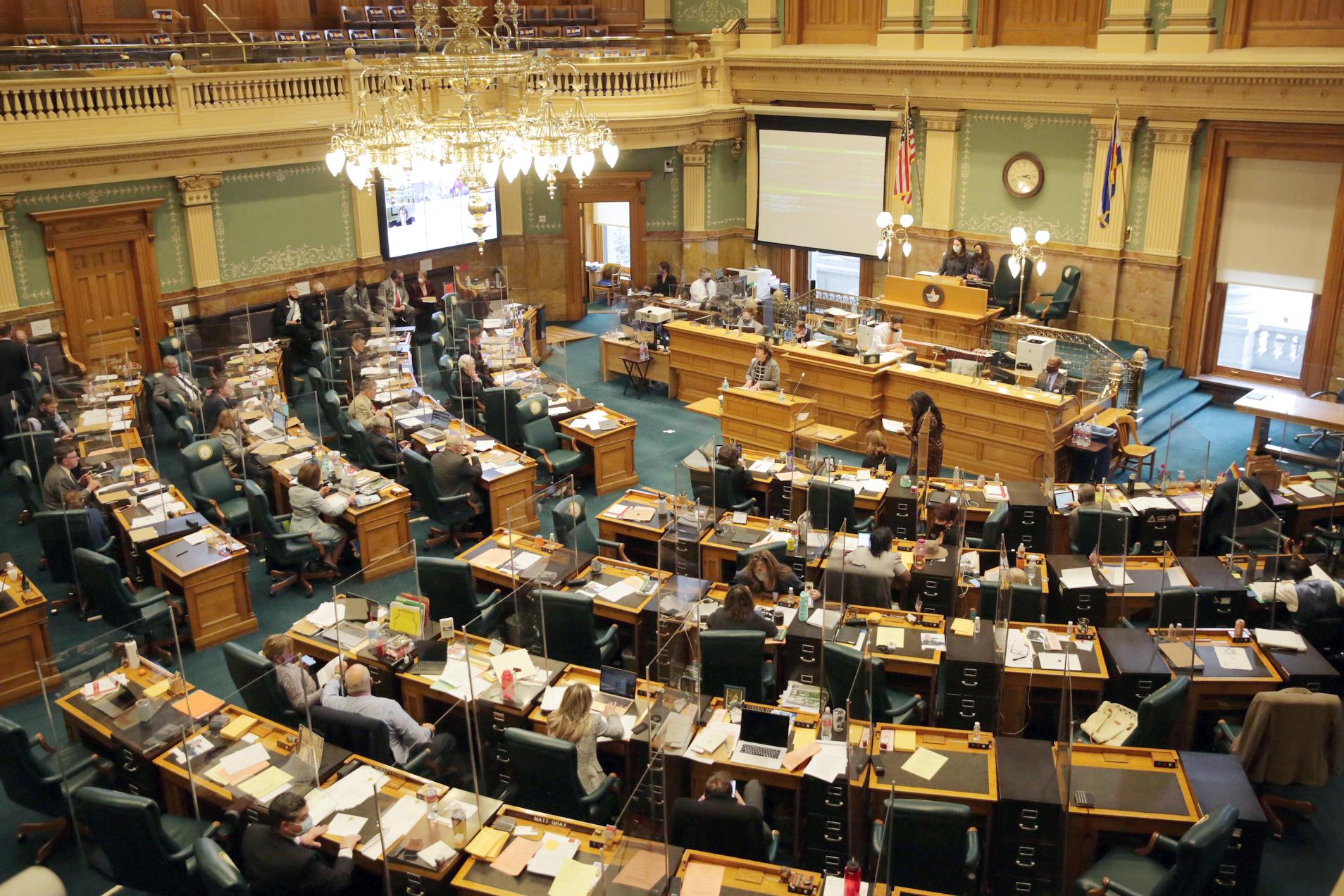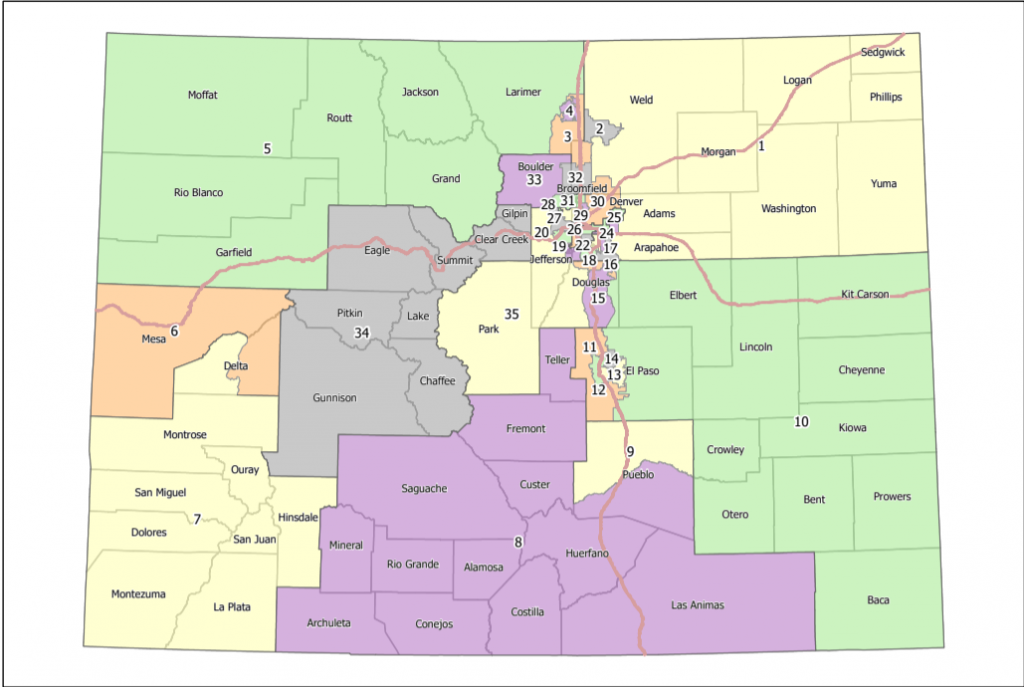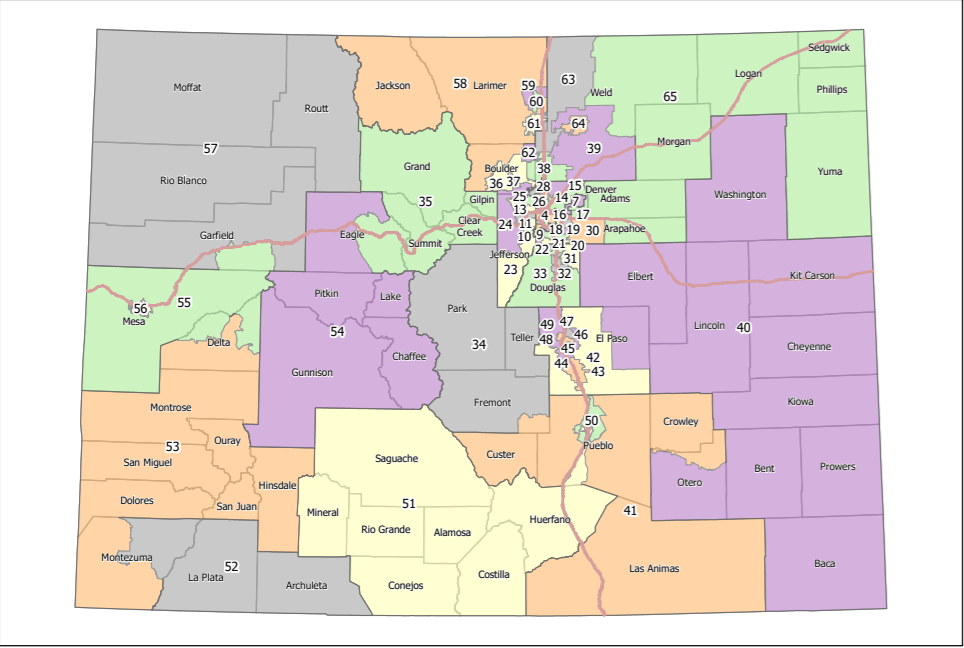
Updated 3:35 p.m.
The future of Colorado’s elections came into sharper focus on Tuesday with the release of the first draft of new district maps for the state Senate and House.
The state’s election maps are redrawn every decade after the U.S. Census, and Colorado this year is using a new, independent process that is meant to reduce the influence of politicians. In their final form, these maps will set the lines for the state’s 65 House seats and 35 Senate seats, determining who can run and vote in each district in the state legislature.
This process comes with significant implications for communities and politicians. By changing election lines, the commission could move some current lawmakers into new districts, where they may face new competition or different voters. The new districts also could divide cities and communities in new ways.
Will this help either party?
Republican leaders hope that the new maps will help them return to power, but it’s tough to tell if that will happen.
“I don’t see much difference from today, honestly,” said Ryan Winger, director of data analysis for the Republican pollster Magellan Strategies.
On the Senate side, staffers believe the draft map would give Republicans at least a slight advantage in 15 out of 35 districts. That is the exact number of seats that the party currently holds.
Drafted State Senate Legislative Map

Sage Naumann, spokesperson for the Senate Republicans, said they “trust that process” that’s being used to redraw the lines. Democrats in the Senate didn’t immediately respond to a request for comment, although the state party called them a “starting point.”
Earlier this month, Senate Minority Leader Chris Holbert said that Republicans are hopeful they could gain a better chance of flipping the Senate.
“We're anxiously waiting to see if (redistricting) is successful in reducing or maybe eliminating gerrymandering. Concise, uniform districts that embrace communities of interest... should lead to more seats leaning in Republican favor in the state Senate,” he said in an interview before the preliminary maps were released.
“I don't think we'll see the House flipped, but I'm very optimistic based on how those maps turn out later this year, that Senate Republicans will be in the majority starting in January of ‘23,” Holbert added.
Republicans have argued that the current districts unfairly advantage Democratic candidates.
In the House, Republicans may be favored in 28 out of 65 districts. That’s a slight improvement from their current situation — they hold only 24 seats — but it would still leave the party with a hard road to retake power in the chamber.
Drafted State House Of Representatives Legislative Map

“The House map is maybe a little bit more favorable toward Republicans than the last map was,” Winger said
Kristi Burton Brown, chair of the Colorado GOP, stressed that the maps are only preliminary.
“Coloradans we talk with are tired of safe seats for both Democrats and Republicans. We know our message will resonate with Coloradans, and we look forward to seeing even more legislative seats becoming competitive as the maps evolve,” she said in a written statement.
Morgan Carroll, the leader of the state Democratic Party, similarly said it was a “starting point for an important process,” urging people to “make their voices heard and inform the final map.”
The preliminary maps were drawn by state staffers, who were trying to balance different factors — such as preserving whole communities, keeping the shapes compact and making districts competitive.
They are based on Census estimates about the demographics of the state’s different areas; later this year they will be reconciled with the final data produced by last year’s Census. The commission is also accepting comments and will host a series of public hearings this summer and fall as it weighs potential changes to the drafts.
How should they handle existing communities?
The commission faces some confounding challenges. While they’re redrawing the maps, they’re supposed to preserve “communities of interest” and avoid breaking up groups of “racial or language minority” voters.
That means they are likely to hear a lot about the racial and ethnic composition of the districts. As it stands, the draft House map could effectively dilute the power of Hispanic or Latino voters.
It only has three districts in which Hispanic voters are the majority, compared to seven in the current maps when they were drafted, staff said.
“We believe this resulted from our maintaining city boundaries, and in some cases within a city, choosing the wrong neighborhoods to keep together,” said Jeremiah Barry, an attorney on the commission staff.
The effect on Latino voters was “a punch in the gut,” said Joe Salazar, the civil rights attorney and former Democratic representative, in an interview. He urged the commission to focus on preserving communities, rather than worrying about how competitive districts are.
“It’s not about balancing out the state House and the state Senate, it’s about making sure that these communities are being represented and these votes aren’t being diluted,” Salazar said.
The maps’ racial and ethnic makeup could be rebalanced as the 12-member commission does its work. They’ll also debate whether to split counties and cities — decisions that could prove controversial.
For example, the current Senate District 19 is contained within Jefferson County. But the new map splits off the northern part of the district and expands it into Adams County.
“The proposed maps really break up that compactness and drive out the districts over multiple counties and multiple cities,” said state Sen. Rachel Zenzinger, the Democrat who currently represents the 19th district. “I’m really confounded by what drove these preliminary lines, but I’m not too worried, because some of them will change.”
Zenzinger is term-limited, so she won’t be running for election in the new district.
How does this affect incumbents?
Some lawmakers could end up in new districts. And, in some cases, multiple incumbents could end up in the same district. The Colorado Sun identified twenty cases where the proposed districts are home to multiple current lawmakers.
In some cases, that means lawmakers will have to face off in primaries or general elections to see who gets to represent the new district.
“They pit a lot more incumbent Democrats against each other than Republican incumbents,” said Rick Ridder, a Democratic pollster and strategist. That’s not entirely surprising, since there are more Democrats in the legislature, he said.
But, overall, he argued, the maps gave “a little bit” of a boost to Republicans.
“As with the congressional seats, I would say, they’ve tended to make the Republican seats a little bit safer and make the Democratic seats a little more competitive,” he said.
The commission is not allowed to protect candidates or current lawmakers as they redraw the maps. Staff did not look at the addresses of any officeholders during their work, they said.
The plan would affect more incumbents than in previous redistricting cycles, said Republican strategist Josh Penry. “This would have never happened,” he said. He takes the change as a sign that politicians really did have far less influence over the process.
“When the elected officials or more political people are drawing the maps, they kind of painstakingly draw maps to protect incumbents in both parties.”
What happens next?
The redistricting commissioners made few comments on Tuesday morning, instead using the meeting as a chance to get oriented with the new maps and reports provided by staff. Interactive and PDF versions of the maps are available on the state’s redistricting website.
The legislative commission is set to reconvene on Friday. Over the next few months, the commission will take draft maps on tour, holding at least 21 public hearings around the state. They’ll eventually choose final maps and submit them to the Colorado Supreme Court, which may approve or reject them. The court is due to sign off on the final maps by Dec. 29.
A related commission is working on the state’s new Congressional districts. Both commissions were created by constitutional amendments, which were approved by voters in 2018. By law, the commissions’ membership must be split between Republican, Democratic and unaffiliated members.








